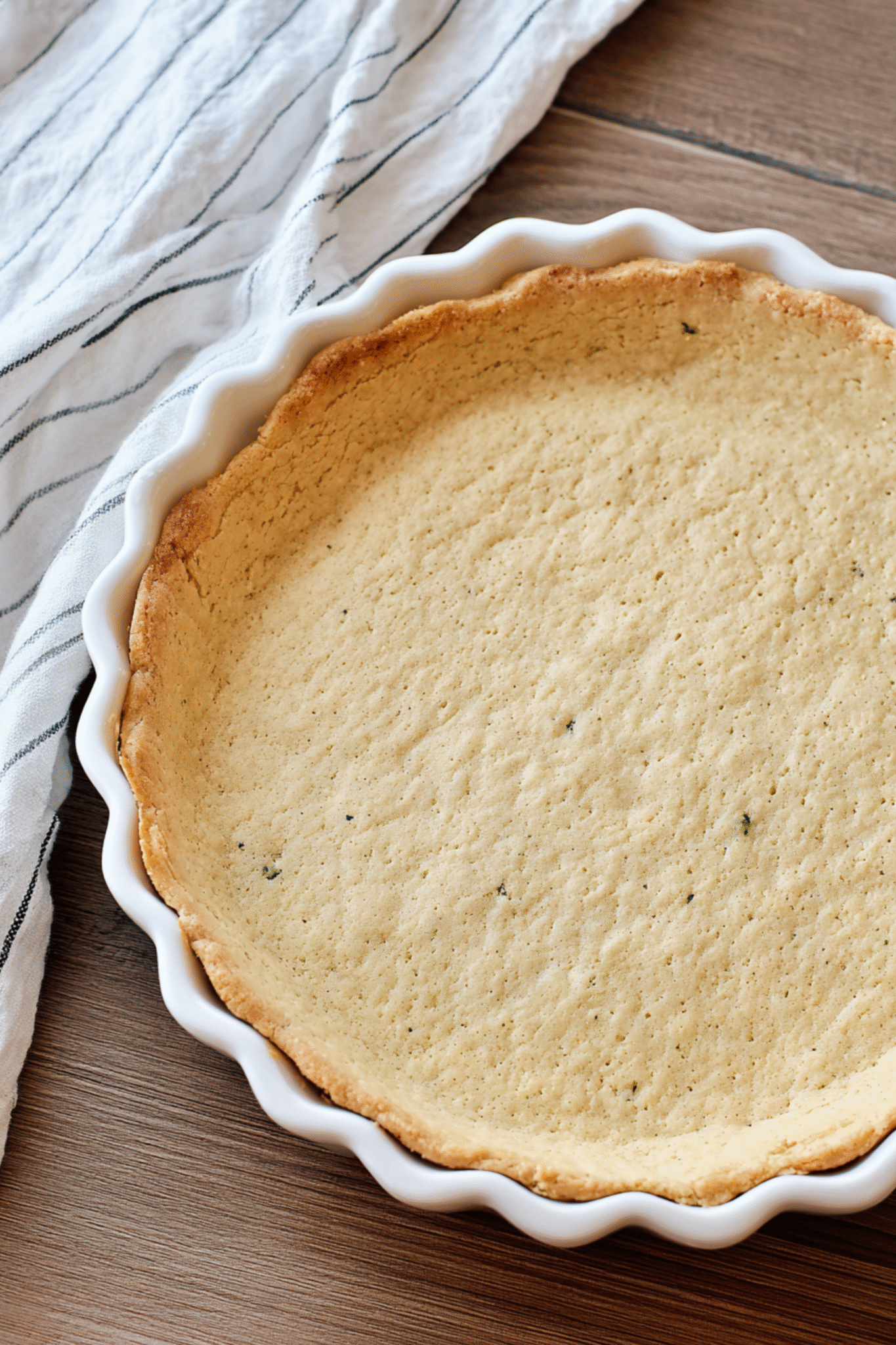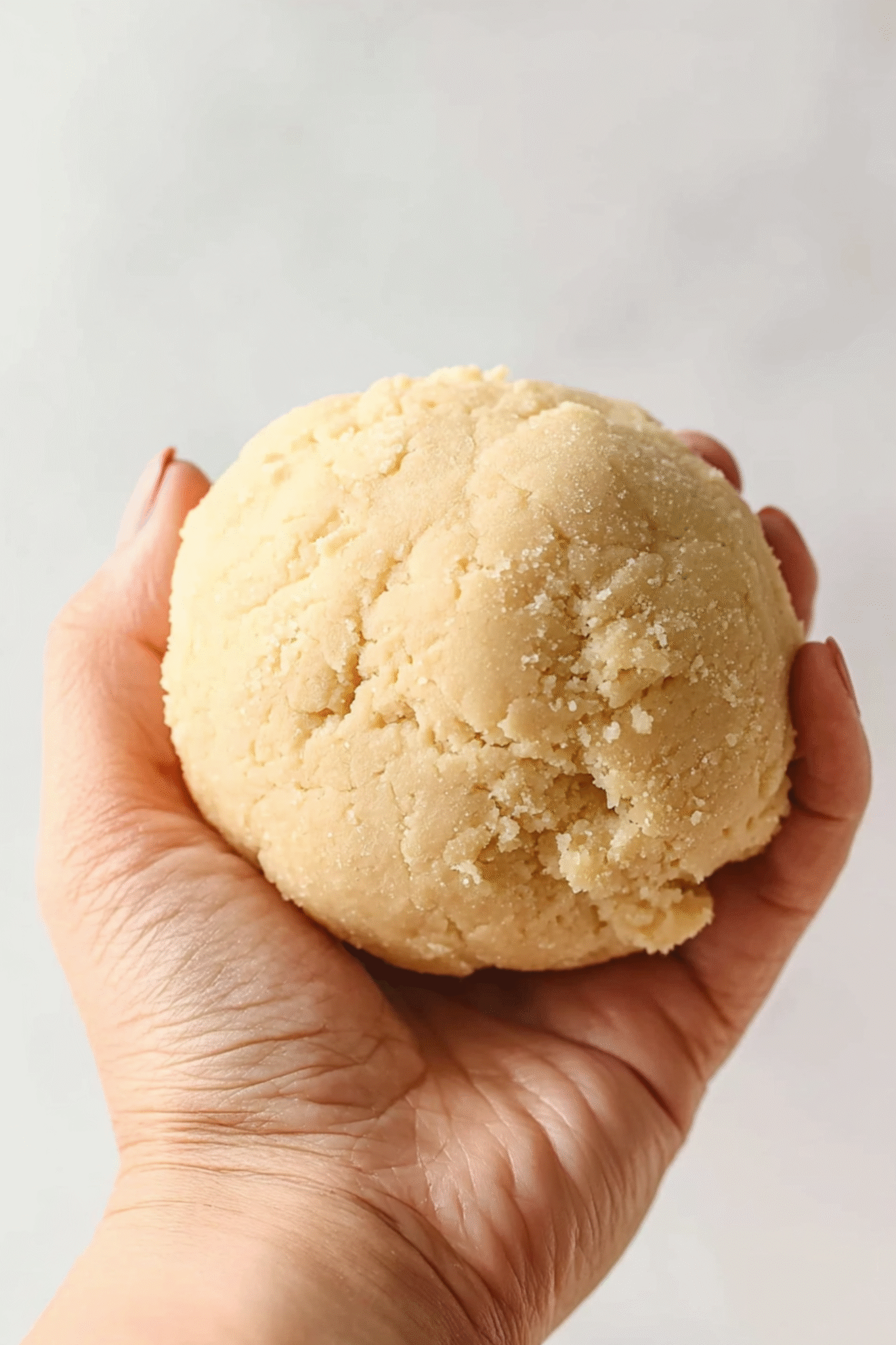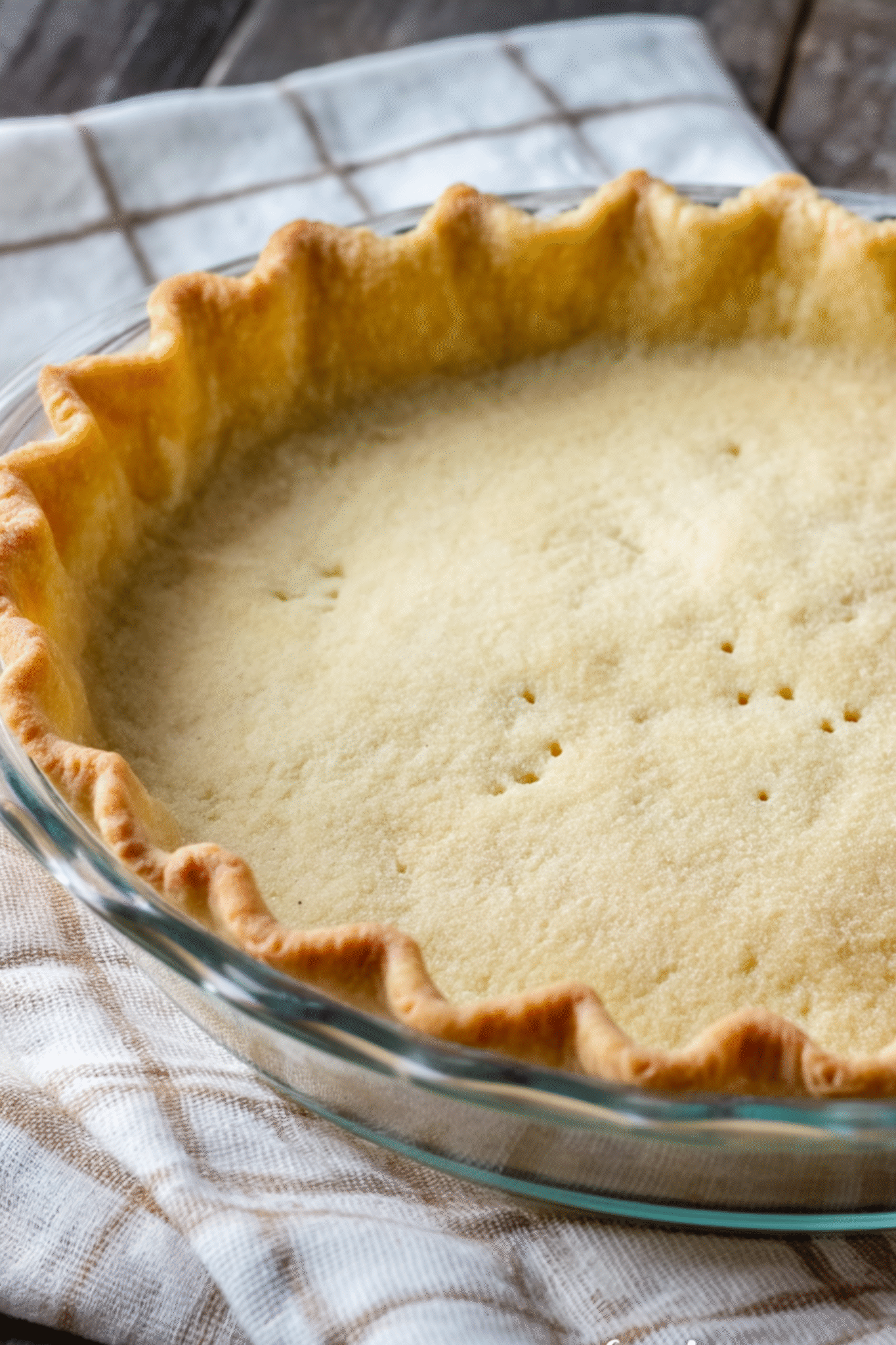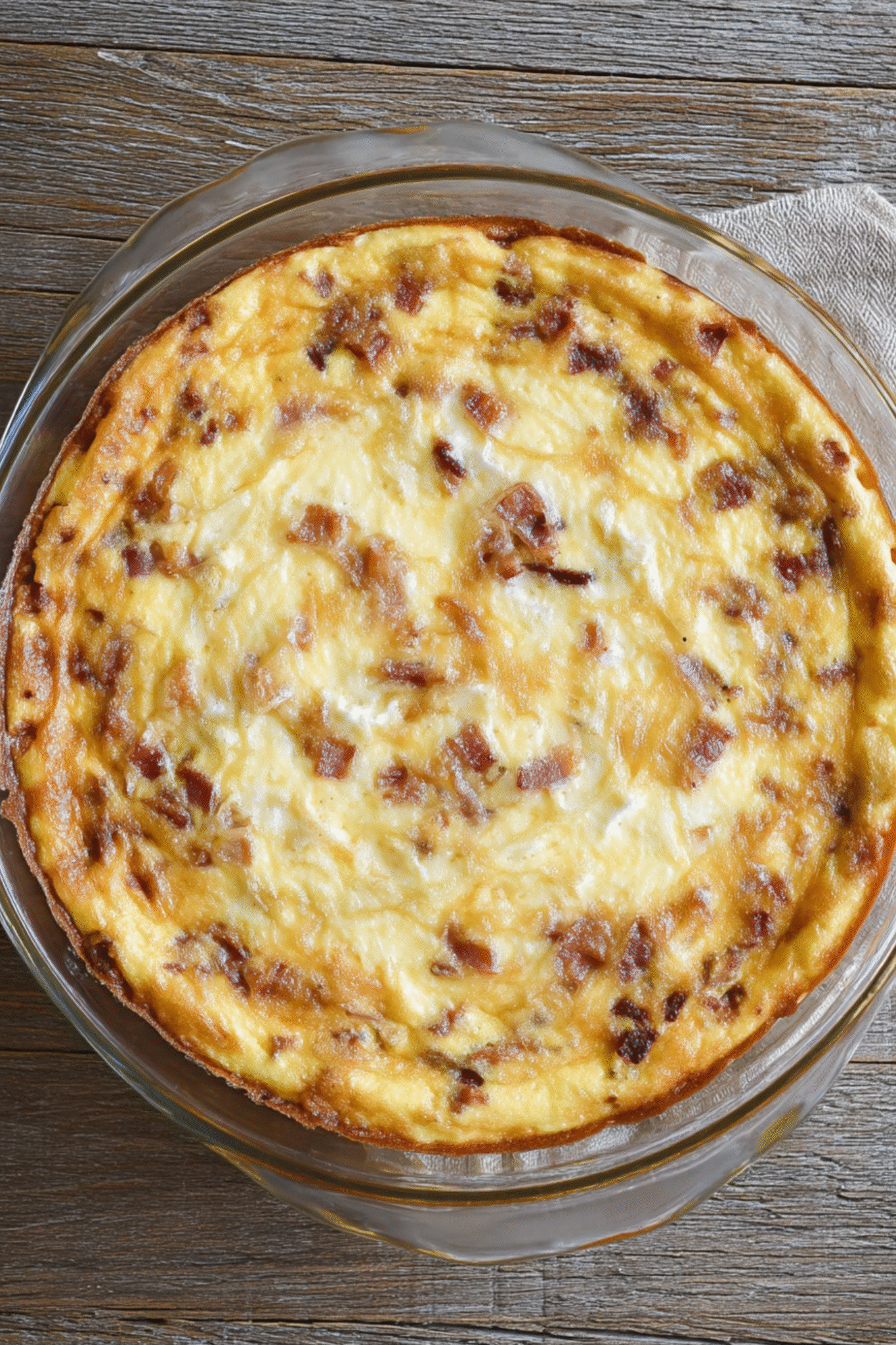If you’ve been hunting for a quiche crust that’s both gluten-free and foolproof, this almond flour quiche crust will become your new go-to. In this article, I’ll walk you through how to make a rich, nutty base that holds up to any filling without falling apart or tasting dense. Whether you’re aiming for a light brunch or a make-ahead weekday breakfast, this simple recipe delivers every time. You’ll also learn why almond flour behaves differently in doughs, what tricks help it bake evenly, and how to avoid common pitfalls. Let’s get to it.

Table of Contents
Why Almond Flour Quiche Crust Feels Like Home
Baking from Memory: The First Time I Made Almond Flour Quiche Crust
When I moved from Naples to New York, I missed the scent of savory pies baking in my mother’s kitchen. She never used almond flour—her crusts were classic and buttery—but I still remember her words when I started experimenting with my own gluten-free crusts: “Ivana, just listen to the dough.” This almond flour quiche crust came from one of those quiet kitchen afternoons, when I wanted something nourishing, easy, and good enough to bring the family back around the table.
I remember mixing the almond flour with olive oil for the first time—it felt rich but wholesome. That crisp, nutty texture it gave after baking felt just right under a silky quiche filling. And it holds up beautifully, whether you’re layering it with greens or roasted veggies. This recipe’s become a staple in my kitchen, just like our spinach and feta crustless quiche and blended cottage cheese breakfast bowls.
The Magic of Almond Flour in Quiche Crust
Using almond flour in a quiche crust isn’t just about avoiding gluten—it’s about flavor and simplicity. Almond flour creates a lightly sweet, earthy base that browns beautifully and pairs well with savory fillings. Since it’s denser than wheat flour, it doesn’t puff or flake, but that’s what makes it so reliable for wet fillings like eggs and cheese. When mixed with olive oil and a little water, it forms a soft, press-in dough that bakes into a crisp, sturdy shell.
The best part? This almond flour quiche crust bakes in under 15 minutes. That makes it ideal for busy mornings or prepping multiple meals at once. Whether you’re filling it with a creamy spinach mixture or pairing it with something tangy like roasted tomatoes, this crust doesn’t buckle. And it’s naturally grain-free, so it’s perfect for anyone following low-carb or gluten-sensitive lifestyles. I use it as the base for more than just quiche—think savory pies, mini tarts, or even as the base for a cottage cheese flatbread remix.
How to Make the Perfect Almond Flour Quiche Crust
Simple Ingredients, Big Flavor
This almond flour quiche crust is built from six pantry-friendly ingredients, and each plays a role in creating that golden, savory foundation. Almond flour brings nuttiness and structure. Sea salt and baking soda add balance and a touch of lift. Olive oil creates moisture and richness, while filtered water brings it all together. Chives? Optional but they add brightness and color if you have them.
The key to a perfect crust starts with not overpacking your almond flour. Use a spoon to fluff it before measuring, and level it off gently. This keeps the crust light instead of dense. When combined with the oil and water, you’ll get a dough that’s soft and pliable not crumbly, not sticky. It won’t look like traditional dough, but trust the process.
This is a press-in crust, not a rolled one. That’s the beauty. No chilling, no rolling pins. Just use your fingertips to press it into your pie dish. Make sure it’s even especially around the edges so it bakes uniformly. You’re aiming for a crust about ⅛ inch thick, just like you’d want with a buttery tart base or your favorite keto tortilla.
Baking Tips: Crisp, Golden, and Foolproof
Preheat your oven to 350°F before the crust goes in. This ensures an even bake from the start. The crust needs just 12–15 minutes keep an eye on the edges, and when they start turning golden, it’s ready. You don’t want it too brown yet; remember, it’ll go back into the oven once the filling is added.
Let the crust cool fully before adding any egg-based filling. This keeps the bottom from getting soggy and helps set the structure. If you’re planning ahead, you can even bake the crust the day before and store it, covered, at room temp.
One final note: don’t skip pre-baking. Since almond flour lacks gluten and elasticity, it needs time to firm up before handling any wet ingredients. But once it’s set, it’ll hold your quiche perfectly from the first slice to leftovers two days later.
This method also works great if you’re making crusts in advance for a weekend brunch spread, like keto chocolate cupcakes on the side or pairing with a fresh salad.

What You Need to Know About Baking with Almond Flour
Will Dough Rise with Almond Flour? What to Expect
If you’ve ever wondered whether almond flour behaves like traditional flour in baking—especially when it comes to rising—the short answer is: it doesn’t, and that’s okay. Almond flour lacks gluten, which is what gives traditional dough its lift, elasticity, and chewy structure. But when it comes to something like an almond flour quiche crust, this is actually a benefit.
You don’t want your quiche crust puffing or warping while baking. You want it to stay flat, crisp, and able to cradle your filling without cracking. That’s exactly what almond flour delivers. The touch of baking soda adds just enough lightness to avoid a dense crust but doesn’t cause rising that would disrupt the shape.
If you’re adapting recipes that call for rising or flaking—like classic puff pastry—almond flour isn’t a direct swap. However, for press-in doughs, nut-based tart shells, and savory pie crusts, it’s unbeatable. For comparison, this crust has a structure similar to recipes like the high-protein granola, where density adds to texture and durability.
Pastry Dough with Almond Flour? Yes—With Adjustments
Can you make pastry with almond flour? Yes, but with expectations adjusted. Traditional pastry is flaky, tender, and holds layers thanks to cold butter and gluten development. Almond flour doesn’t flake in the same way—but it makes an excellent shortbread-style dough.
That’s why this almond flour quiche crust works so well—it’s a savory shortbread base. You press it in, it bakes up firm, and it won’t crumble when sliced. If you’re craving a pastry dough you can roll, consider blending almond flour with other low-carb flours like tapioca or arrowroot, but for simplicity and taste, this crust keeps it beautifully clean.
Want to make it more pastry-like? Chill the dough for 15 minutes before pressing it into the pan. This helps the olive oil firm up slightly, adding a firmer bite. You can also experiment by adding an egg yolk for richness, but the basic version here is more than enough to impress.
Pair it with a zesty filling or a classic quiche Lorraine. And don’t be afraid to riff—it’s as versatile as your favorite cottage cheese queso, just in crust form.
Make-Ahead, Fillings, and Storage Tips for Almond Flour Quiche Crust
How to Store and Reheat Without Losing That Crunch
One of the best things about this almond flour quiche crust is how well it holds up—both fresh and after a few days in the fridge. Once baked and cooled, you can cover the entire quiche (or just the crust) and refrigerate it for up to 3 days. The crust stays crisp, especially if you’re storing it before filling.
To reheat a filled quiche, pop it in a 300°F oven for 10–15 minutes, or until warmed through. Avoid the microwave if possible—it softens the crust. If you’re prepping the crust ahead for a party or meal prep, bake it, let it cool, and store it in the fridge tightly wrapped. You can even freeze it baked or unbaked for up to a month. Just thaw in the fridge before using.
This crust works for sweet or savory flavors. If you’re skipping the chives and salt, you could repurpose the dough for mini tart shells or even a light dessert base. It’s just as adaptable as your favorite keto chocolate or quick breakfast ideas.
Filling Ideas That Work with Almond Flour Quiche Crust
The beauty of a neutral, nutty crust is that it pairs with so many fillings. You can go classic with sautéed spinach, onions, and feta. Or go seasonal with roasted squash and thyme. Even protein-packed combos like bacon and cheddar or mushroom and gruyère work beautifully.
For a lighter brunch, try filling it with egg whites, goat cheese, and herbs. If you’re prepping weekday lunches, you can bake two quiches with different fillings and enjoy a variety throughout the week. Think of this crust like a reliable base layer—whatever you add on top, it supports.
Here’s a quick idea table:
| Filling | Flavor Profile |
|---|---|
| Spinach, feta, red onion | Savory, Mediterranean |
| Roasted tomatoes & mozzarella | Tangy, Herby |
| Bacon, cheddar, scallion | Smoky, Rich |
| Zucchini, goat cheese, mint | Light, Fresh |
Frequently Asked Questions About Almond Flour Quiche Crust
Can you use almond flour in quiche?
Absolutely. Almond flour makes a delicious, gluten-free base for quiche. It’s the star of this almond flour quiche crust recipe, providing a nutty flavor and a sturdy texture that holds up beautifully under egg-based fillings.
What is the trick to baking with almond flour?
Don’t pack it tightly when measuring, and mix gently to avoid dense results. The real trick, especially for almond flour quiche crust, is to pre-bake it until golden and fully set—this keeps it crisp and ready for any filling you add.
Will dough rise with almond flour?
Not significantly. Almond flour doesn’t contain gluten, so it doesn’t rise like wheat flour. That’s why it’s ideal for pressed crusts like this one—flat, crisp, and stable.
Can I make pastry with almond flour?
Yes, but expect a shortbread-style texture, not a flaky one. For a rollable dough, you may need to blend almond flour with other low-carb flours or add binders like egg or cheese.
Conclusion
This almond flour quiche crust isn’t just a workaround for traditional pastry—it’s a flavorful, foolproof option you’ll want to return to. Whether you’re baking for brunch, prepping weekday lunches, or creating something special for guests, this crust delivers every single time. With just a few ingredients and no rolling required, it’s a go-to recipe that brings ease and joy to your kitchen.
If you enjoyed this recipe, come join me for more! I share weekly kitchen inspiration, easy ideas, and flavor-packed recipes—follow me on Facebook and Pinterest to keep the delicious hand spirit going.
Print
Almond Flour Quiche Crust Recipe
- Total Time: 25 minutes
- Yield: 1 quiche crust 1x
Description
This almond flour quiche crust is a gluten-free, savory base that’s crisp, nutty, and incredibly easy to make. It’s the perfect make-ahead crust for any quiche filling, holding up beautifully and baking to golden perfection.
Ingredients
2 cups almond flour
1/2 teaspoon sea salt
1/2 teaspoon baking soda
1/4 cup extra-virgin olive oil
2 tablespoons filtered water
1 tablespoon freshly chopped chives (optional)
Instructions
1. Preheat the oven to 350°F.
2. Gently mix almond flour, sea salt, and baking soda in a large mixing bowl.
3. Make a well in the center and add olive oil and water. Mix until a dough forms.
4. Add chives if using and combine.
5. Press dough evenly into a 10-inch pie pan to 1/8 inch thickness.
6. Bake for 12–15 minutes, until set and lightly golden.
7. Let cool before adding filling.
8. Add desired quiche filling and bake until eggs are set (20–30 minutes).
Notes
Do not overpack almond flour while measuring.
Crust can be made ahead and refrigerated for 3 days.
Reheat quiche in a 300°F oven to maintain crispness.
- Prep Time: 10 minutes
- Cook Time: 15 minutes
- Category: Breakfast, Brunch
- Method: Baking
- Cuisine: American
Nutrition
- Serving Size: 1 slice
- Calories: 180
- Sugar: 1g
- Sodium: 120mg
- Fat: 16g
- Saturated Fat: 1.5g
- Unsaturated Fat: 14g
- Trans Fat: 0g
- Carbohydrates: 5g
- Fiber: 2g
- Protein: 4g
- Cholesterol: 0mg
Keywords: almond flour quiche crust, gluten-free crust, low-carb quiche



